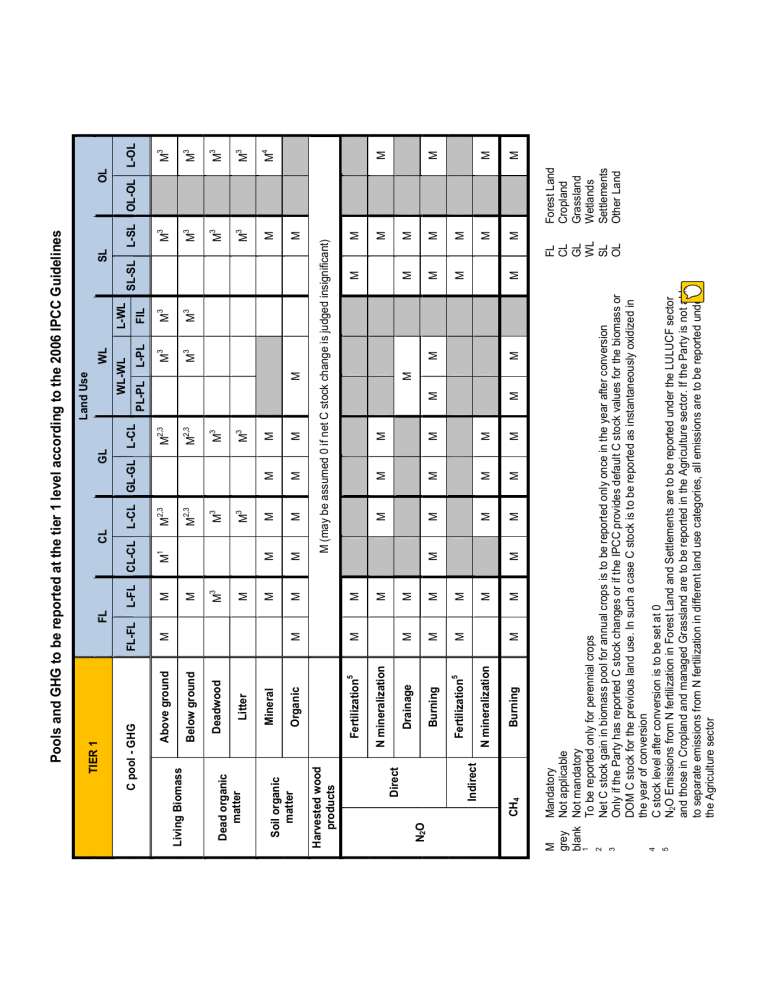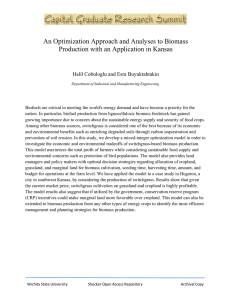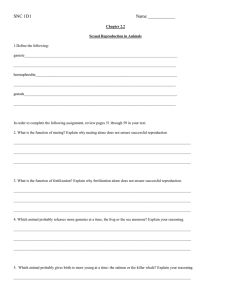
CH4 Indirect Burning N mineralization 5 M M M Burning Fertilization M M Drainage M M M M M M N mineralization M M Organic 5 M Mineral Fertilization M Litter M M 3 M M L-FL Deadwood Below ground M FL-FL FL M M M 3 M M M 3 M M 2,3 M 2,3 M L-CL 3 M GL-GL 3 M M 2,3 2,3 M L-CL GL WL PL-PL M 3 M 3 M L-PL WL-WL Land Use 3 M 3 M FIL L-WL SL-SL SL M M M M M M M M M M M M M M M M M M M M M M M M M M FL CL GL WL SL OL 3 M 3 M 3 M 3 M M M M M M M M OL-OL OL M M M M M 4 3 M 3 M 3 M 3 M L-OL Forest Land Cropland Grassland Wetlands Settlements Other Land L-SL M (may be assumed 0 if net C stock change is judged insignificant) M M M 1 CL-CL CL M Mandatory grey Not applicable blank Not mandatory 1 To be reported only for perennial crops 2 Net C stock gain in biomass pool for annual crops is to be reported only once in the year after conversion 3 Only if the Party has reported C stock changes or if the IPCC provides default C stock values for the biomass or DOM C stock for the previous land use. In such a case C stock is to be reported as instantaneously oxidized in the year of conversion 4 C stock level after conversion is to be set at 0 5 N2O Emissions from N fertilization in Forest Land and Settlements are to be reported under the LULUCF sector and those in Cropland and managed Grassland are to be reported in the Agriculture sector. If the Party is not able to separate emissions from N fertilization in different land use categories, all emissions are to be reported under the Agriculture sector N2O Direct Harvested wood products Soil organic matter Dead organic matter Living Biomass Above ground C pool - GHG TIER 1 Pools and GHG to be reported at the tier 1 level according to the 2006 IPCC Guidelines


